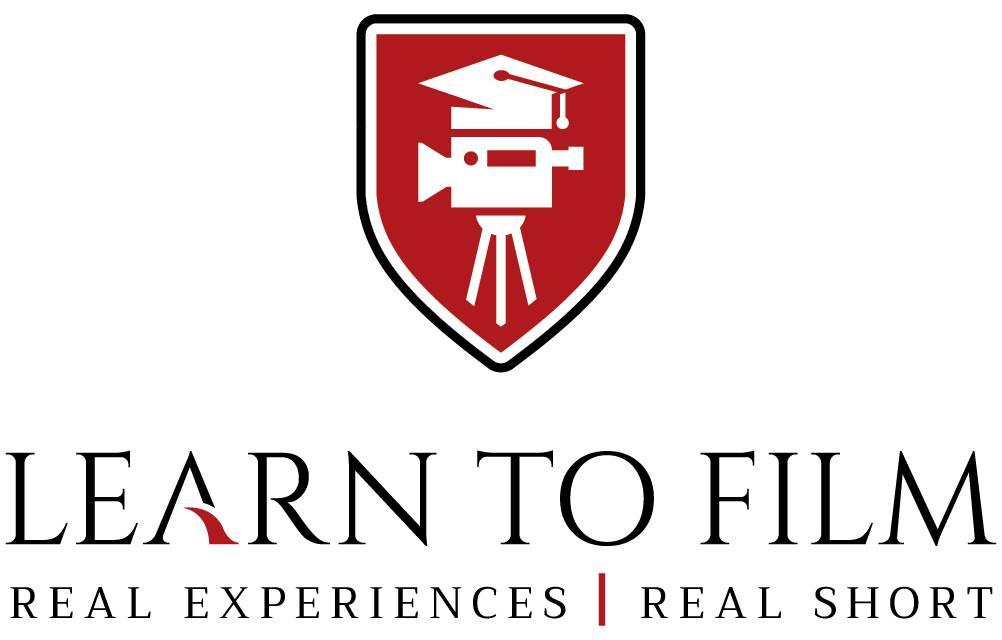
Creating a budget for your film production is an expensive and complicated process. Whether you’re working on a short film, a feature film, or anything in between, it’s crucial to have a solid budget in place to ensure that your project runs smoothly and stays on track. A well-constructed film budget will help you keep track of your expenses, anticipate potential costs, and make sure that you have enough money to complete your project.
To help you get started, this comprehensive guide will cover the essential steps for crafting a film budget, along with a free film budget template that you can use to create your own budget.
Determine Your Budgeting Method
One of the first steps in creating a film budget is to determine the budgeting method that you will use. There are two common methods for film budgeting: top-down and bottom-up.
The top-down method starts by determining the overall budget for the film and then breaking it down into smaller budgets for each department and category. This method is best suited for larger productions with a clear overall budget in place. For example, if your film has a budget of $1 million, you would allocate a portion of that budget to pre-production, production, post-production, and marketing and distribution. From there, you would break down each department’s budget into smaller categories, such as script, cast and crew, equipment rentals, and post-production expenses.
Bottom-Up Method: The bottom-up method, on the other hand, starts by calculating the cost of individual items and working up to an overall budget. This method is more flexible and is best suited for smaller productions where the overall budget is less certain. In this method, you would start by researching the costs of various items, such as cast and crew salaries, equipment rentals, and post-production expenses. Then, you would add up all of these costs to arrive at an overall budget.
Both methods have their pros and cons, and the best method for you will depend on the size and scope of your film project. Ultimately, the most important thing is to choose a budgeting method that works for your project and allows you to create a realistic and accurate film budget.
Identify Your Film Production Scope and Needs
Once you have chosen the budgeting for your film production, the next step is to identify the scope and needs of your film project. This involves considering a number of factors, including the type of film you are making, the length of the film, the cast and crew size, and any special effects or stunts that will be required.
The type of film you are making will impact your budget in a number of ways. For example, a low-budget indie film will have different cost considerations than a large-scale Hollywood blockbuster. Consider the type of film you are making and research the typical budgets for similar projects.
The length of your film will also impact your budget. A feature-length film for example will require much more resources and budget than a short film, so consider your film’s duration and plan your budget accordingly.
And don’t forget the size of your cast and crew. Just think about how much talent is on screen and how many different crew members you will need on set throughout the duration of the production.
Is the story you’re telling a stunts riddled or visual effects-heavy spectacle? Special effects and stunts can add a significant amount to your budget so make sure you factor this in as well.
Research and Estimate Budgeting Costs
With the scope and needs of your film project in mind, the next step is to research and estimate costs to understand more about budgeting for your film production. This involves gathering information about the cost of various elements of your film, such as cast and crew salaries, equipment rentals, and any special effects that your post-production team need to design and integrate into the film.
A great deal of your budget will no doubt be allocated to cast and crew salaries. In North America and Canada for example, cast and crew salaries are often governed by industry guilds and unions such as the Cinematographers and Editors Society’s (ASC and ASE) and unions such as IATSE (International Alliance of Theatrical Stage Employees). These organisations establish standard rates of pay for various film positions, such as directors, cinematographers, and editors, and you can usually find pay or salary guides through these organisations to help you budget for your crew members according to the standardised rates of pay in your country.
When researching cast and crew salaries, it’s important to consider the experience level of the talent and their union status. If you are in a country whose industry is governed by unions, these members will typically earn cost more to hire and in some cases attract additional benefits such as health insurance and pension benefits.
When estimating cast and crew salaries, it’s important to use the most up-to-date and accurate information possible. This may mean reaching out to the appropriate industry organisation or union for current salary information, or consulting industry publications or websites for information on standard rates of pay.
Another significant cost will be the rental of equipment, such as cameras, lighting, and sound gear. In Australia for example, you can expect to pay around AU$500 a day to hire out a Sony FX9 digital video camera for a day. And for US based productions, you can typically expect to pay US$1200 a day to hire out a RED Epic Helium 8K. So take the time to research rental costs at your local rental houses to give you a much better idea on how much you’ll be up for when renting equipment.
Post production and visual effects can add a significant amount to your budget, particularly for larger productions and costs can vary considerably, depending on your post production requirements. You may only need an individual all rounder freelancer, or an entire visual effects team at a post production house.
It’s important to gather as much information as possible when researching and estimating costs. This will help you create a realistic and accurate budget, and will also help you anticipate any potential expenses that may arise during the production process.
It’s also important to be conservative when preparing your budget, and always more prudedent to overestimate costs and end up with a budget surplus than to underestimate costs and end up over budget.
Develop a Line Item Budget for Your Film Production
With your research and cost estimates complete, the next step is to develop a line item budget. A line item budget is a detailed breakdown of all the expenses you will incur in your film project, organised by category. The categories can vary depending on the specifics of your project, such as cast and crew salaries, equipment rentals, special effects, and location expenses.
When developing your line-item budget, it’s important to be as detailed and specific as possible. This will help you keep track of all your expenses and ensure that you have accounted for all the costs associated with your film project.
For each category, list all the items or expenses you expect to incur, along with the estimated cost for each item. Be sure to include both fixed costs, such as cast and crew salaries, and variable costs, such as food and transportation expenses.
It’s also important to include contingency expenses in your line item budget. A contingency is a reserve of funds that can be used to cover unexpected expenses or overruns. Typically, a contingency of 10-15% of the total budget is recommended, but this can vary depending on the specifics of your project.
With a detailed line item budget in hand, you will have a clear understanding of all the expenses you will incur in your film project and be able to keep track of your budget as you move through the production process.
Review and Revise Your Film Production Budget
During this step, review each category of your line item budget and make sure that you have accounted for all relevant expenses when budgeting for your film production. Consider whether there are any costs that you may have overlooked or areas where you may need to adjust your estimates. For example, you may need to revise your estimate for equipment rentals if for example you discover that your local rental hire store has suddenly jacked up the pricing on that Arri Amira you wanted to shoot you film with.
It’s also important to consider the feasibility of your budget, based on the resources and constraints of your project. If your budget is too high, you may need to revise your line item budget to reduce expenses in certain areas. This may mean cutting back on the size of your cast and crew, or looking for locations with lower hire fees. On the other hand, if your budget is too low, you may need to revise your line item budget to include additional expenses or allocate more funds to certain areas.
Once you have reviewed and revised your budget, it’s important to double-check your numbers and ensure that all your costs are accurate and up-to-date. By taking the time to review and revise your budget, you can ensure that your film project has the resources it needs to succeed.
Finally, it’s a good idea to seek feedback from others in the film industry, such as producers, directors, or cinematographers, to ensure that your budget is realistic and feasible. They may be able to provide valuable insights and suggest areas where you may need to adjust your budget.
Track Your Expenses with Budgeting Software
With your line item budget complete, it’s important to track your expenses to ensure that you stay within budget. This is where budgeting software applications can be extremely useful for your film production. Applications such as Studio Binder, Movie Magic Budgeting, Celtx Budgeting, Showbiz Budgeting, Hot Budget, and Gorilla Budgeting are designed to help you track your expenses, compare them to your budget, and make informed decisions about the allocation of resources.
These applications make it easy to record your expenses, including the date, vendor, amount, and a description of what the expense was for. They also allow you to compare your actual expenses to your budget, so you can see at a glance how you are doing. If you are over budget in a certain area, the software will highlight this, allowing you to revise your budget or find ways to cut back in other areas.
Budgeting software also makes it easy to review your expenses with your team. You can share your budget and expenses with your team, ensuring that everyone is aware of the current state of the budget and any necessary adjustments. This can help you avoid any miscommunications and keep your team focused on the goals of the project.
In addition to tracking expenses, many budgeting software applications also offer additional features, such as generating reports, creating invoices, and managing project schedules. These features can help streamline your workflow and make the budgeting process easier and more efficient.
Using budgeting software to track your expenses is an effective way to stay on top of your budget and make informed decisions about the allocation of resources.
As you can see, creating a budget isn’t a simple task and certainly isn’t complete once production starts. It’s an ever evolving component of your production that will be along for the ride from entering your first line item through to allocating funds for marketing and distributing your finished masterpiece.
Learn to Film is a hub for training and education for ambitious content creators who want a career in film, video or television. Whether you are looking to specialise in a certain area such as producing or video editing, or want to learn about the whole production process, head on over to our courses page for more information.

